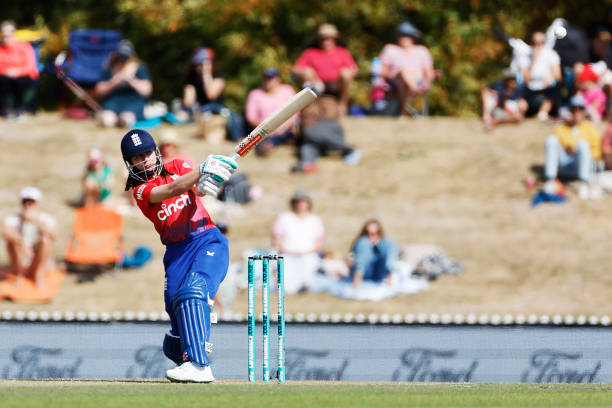What is a Powerplay in Cricket
Cricket, often hailed as a game of strategy and skill, incorporates various tactical elements that can sway the course of a match. One such strategic phase within the game is the powerplay, which holds significant importance in modern cricket.
Introduction to Powerplay in Cricket
In the realm of cricket, a powerplay refers to a specific period during a match where certain restrictions or special rules apply, altering the dynamics of play for both batting and bowling sides. Understanding the intricacies of powerplay can provide valuable insights into how teams approach different phases of a game.
Understanding the Concept of Powerplay
Defining Powerplay
The term ‘powerplay’ essentially denotes a phase within a cricket match where specific rules are in place, aimed at creating a balance between bat and ball. These rules often restrict the fielding team or provide advantages to the batting side, depending on the type of powerplay.
Purpose and Importance
The primary purpose of implementing powerplays is to inject excitement and strategic depth into the game. By introducing restrictions or advantages during certain periods, powerplays challenge teams to adapt their tactics and maximize their performance within the given constraints.
Types of Powerplays
Powerplays in cricket are categorized into different types, each serving a distinct purpose and affecting the gameplay in various ways.
Mandatory Powerplay
The mandatory powerplay, commonly seen in limited-overs formats such as One-Day Internationals (ODIs) and Twenty20 (T20) cricket, mandates certain fielding restrictions during the initial overs of an innings. This phase often encourages aggressive batting and sets the tone for the rest of the match.
Bowling Powerplay
The bowling powerplay, also known as the ‘death overs’ in T20 cricket, grants bowlers additional flexibility and strategic options during specific periods of the game. Bowlers may capitalize on this phase to contain runs, take wickets, or apply pressure on the batting side.
Batting Powerplay
Conversely, the batting powerplay allows the batting team to exploit favorable conditions by accumulating runs more aggressively or targeting specific bowlers. This phase enables batsmen to capitalize on fielding restrictions and accelerate the scoring rate.
Rules and Regulations
Understanding the rules and regulations governing powerplays is essential for both players and spectators to grasp the dynamics of this strategic phase.
Powerplay Restrictions
During powerplays, certain fielding restrictions are imposed, such as the limitation on the number of fielders allowed outside the inner circle. These restrictions vary depending on the format of the game and the specific regulations set by the governing bodies.
Duration and Timing
The duration and timing of powerplays vary across formats and are often determined by the match format, playing conditions, and tournament regulations. Teams must strategize effectively to capitalize on these limited opportunities and gain a competitive edge.
Impact of Powerplay on the Game
Powerplays exert a significant influence on the overall dynamics of a cricket match, shaping strategies, tactics, and outcomes.
Strategic Importance
The strategic significance of powerplays lies in their ability to swing momentum in favor of one team while exerting pressure on the other. Teams often devise specific plans to capitalize on powerplay phases, aiming to dominate proceedings and gain a competitive advantage.
Effect on Scoring Rates
Powerplays typically witness an increase in scoring rates, as batting teams look to capitalize on fielding restrictions and accumulate runs quickly. Conversely, bowling teams may strive to contain runs and take crucial wickets during these periods, thereby impacting the overall flow of the game.
Strategies Employed During Powerplay
Both batting and bowling teams employ various strategies to leverage the advantages offered during powerplay phases.
Bowling Strategies

Bowling teams often adopt aggressive or defensive strategies based on the match situation and conditions. They may deploy attacking field placements, vary bowling tactics, or rely on slower deliveries and variations to unsettle batsmen and restrict scoring opportunities.
Batting Strategies

Batting teams approach powerplays with the intent to maximize run-scoring opportunities while minimizing risks. Batsmen may adopt an aggressive approach, targeting boundary shots and rotating the strike to capitalize on fielding restrictions and build momentum.
Famous Instances and Examples
Throughout the history of cricket, numerous memorable moments and instances have unfolded during powerplay phases, showcasing the strategic brilliance and skill of players.
Memorable Powerplay Moments
From blistering batting displays to remarkable bowling spells, powerplays have witnessed several iconic moments that have left a lasting impact on the game and captivated audiences worldwide.
Evolution of Powerplay in Cricket
The concept of powerplay has evolved significantly over time, reflecting the changing dynamics and demands of modern cricket.
Historical Background
The origins of powerplay can be traced back to traditional cricket formats, where certain periods of play were designated for aggressive batting or bowling. However, the formalization of powerplay rules and regulations occurred primarily in the limited-overs formats, reshaping the strategic landscape of the game.
Changes Over Time
Over the years, cricket authorities have introduced various amendments and adjustments to powerplay rules, aiming to strike a balance between entertainment and competitiveness. These changes have influenced team tactics, player performances, and match outcomes, driving innovation and adaptation within the sport.
Criticism and Controversies
Despite its strategic appeal, powerplays have faced criticism and controversies from various quarters within the cricketing community.
Debates Surrounding Powerplay
Critics often argue that powerplays can skew the balance between bat and ball, favoring one aspect of the game over the other. Additionally, concerns have been raised regarding the impact of powerplays on match outcomes and the overall integrity of the sport.
Proposed Alternatives
In response to criticism and scrutiny, cricket authorities have explored alternative formats and regulations to address the shortcomings of powerplays. These proposals aim to strike a balance between enhancing the entertainment value of the game and preserving its integrity and competitiveness. Ideas such as modifying fielding restrictions, adjusting powerplay durations, or introducing dynamic rule changes have been suggested to mitigate some of the perceived drawbacks associated with traditional powerplay formats.
Future Prospects and Trends
As cricket continues to evolve in response to changing trends and audience preferences. The future of powerplays remains subject to innovation and adaptation.
Potential Changes
Cricket authorities may consider implementing further changes to powerplay rules and regulations in the quest for continuous improvement and enhancement of the game. These changes could encompass a wide range of aspects, including fielding restrictions, powerplay durations, and strategic nuances, aimed at revitalizing the strategic dimension of powerplay phases.
Adaptation to Modern Cricket
In an era characterized by rapid technological advancements and evolving playing conditions. The adaptation of powerplays to modern cricket demands innovation and forward-thinking strategies. Teams and players must remain agile and proactive in adjusting their approaches to powerplay situations, leveraging data analytics, and strategic insights to gain a competitive edge.
Analyzing Powerplay in Different Formats
Powerplays manifest differently across various cricket formats, each presenting unique challenges and opportunities for teams and players.
Test Cricket

While powerplays are not formally designated in Test cricket. The concept of seizing momentum and capitalizing on favorable conditions remains paramount. Teams may employ subtle tactical shifts and strategic maneuvers to gain ascendancy during specific phases of play, showcasing the strategic depth inherent in the longest format of the game.
One-Day Internationals (ODIs)

In ODIs, powerplays play a crucial role in shaping the trajectory of a match. Particularly during the initial overs of each innings. Teams often prioritize aggressive batting or disciplined bowling during powerplay phases. Aiming to set the tone for the remainder of the innings and gain early advantages.
Twenty20 (T20) Cricket

T20 cricket, renowned for its fast-paced and high-octane nature, places significant emphasis on powerplays as catalysts for momentum shifts and game-changing performances. Teams frequently devise innovative strategies to maximize run-scoring opportunities or restrict opposing batsmen during powerplay phases, recognizing their significance in determining match outcomes.
Coaching and Training for Powerplay Situations
Coaching and training programs play a pivotal role in preparing players to excel in powerplay situations. Equipping them with the necessary skills and tactical acumen to thrive under pressure.
Skill Development
Coaches focus on honing specific skills required to succeed during powerplays, such as aggressive shot-making, precision bowling, and astute fielding placements. Players undergo rigorous training regimes aimed at enhancing their proficiency in executing game plans and adapting to dynamic match situations effectively.
Tactical Training
Strategic awareness and tactical intelligence are integral components of player development programs. With coaches emphasizing the importance of situational awareness and decision-making during powerplay phases.
Impact of Powerplay on Player Performance
The influence of powerplays extends beyond mere tactical considerations, exerting a profound impact on the performance and mindset of players.
Statistical Analysis
Statistical analysis offers valuable insights into the correlation between powerplay performance and overall match outcomes. Metrics such as run rates, wicket-taking probabilities, and batting strike rates provide quantitative measures of player effectiveness during powerplay phases. Informing strategic decision-making and player selection processes.
Psychological Factors
The psychological aspect of powerplays cannot be overstated. With players often experiencing heightened pressure and intensity during these critical phases of the game. Mental resilience, composure under pressure, and the ability to thrive in high-stakes situations are essential attributes for players seeking to excel during powerplay periods. Highlighting the mental fortitude required to succeed at the highest level of the sport.
Conclusion
In conclusion, powerplay phases in cricket represent pivotal moments that encapsulate the strategic essence of the game. Whether through aggressive batting, disciplined bowling, or innovative tactical maneuvers. Teams leverage powerplays to gain strategic advantages and influence match outcomes. As cricket continues to evolve, the significance of powerplays as catalysts for momentum shifts and game-changing performances is likely to endure. Underscoring their enduring appeal and strategic relevance in the modern game.
FAQs about Powerplay in Cricket
- What is the duration of a powerplay in cricket?The duration of a powerplay varies depending on the format of the game and the specific regulations in place. In limited-overs formats such as ODIs and T20s. Powerplays typically span a set number of overs at the beginning of each innings.
- Can powerplays be taken at any time during a cricket match?Powerplays are usually pre-defined periods within a match where specific rules or restrictions apply. While teams may strategize to capitalize on favorable conditions at other times. The formal powerplay phases are typically set by the governing bodies and adhere to established regulations.
- How do powerplays affect team strategies?Powerplays influence team strategies significantly, with batting and bowling sides adapting their approaches to maximize advantages or mitigate risks during these phases. Teams may employ aggressive batting tactics, innovative bowling strategies, or dynamic fielding placements to capitalize on powerplay opportunities.
- Are powerplays more critical in certain cricket formats than others?While powerplays hold significance across all cricket formats. Their impact may vary depending on the specific dynamics and strategic nuances of each format. For instance, powerplays in T20 cricket are often more intense and influential. Due to the condensed nature of the game and the emphasis on quick scoring rates.
- How can players improve their performance during powerplay phases?Players can enhance their performance during powerplay phases through diligent practice, tactical awareness, and mental resilience. Skill development, strategic preparation, and situational adaptability are essential components of player. Development programs aimed at maximizing performance during critical phases of the game.

